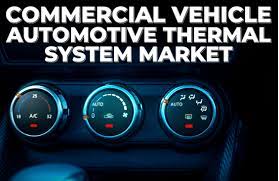The brake lines are an important part of any vehicle’s braking system. They directly influence the response and efficiency of brakes. Therefore, in passing hydraulic pressure they are an important part. Properly operating brake lines is necessary to maintain control over the car and avoid accidents, as well as protect drivers ‘and passengers’ lives.
In this article, we’ll compare these two commonly used materials for brake lines: stainless steel and copper. The two materials have different properties, which impact the functioning of brake systems. Multiple factors will be considered including corrosion resistance, flexibility, and cost to assist drivers in making a reasonable evaluation of their brake line.
Essential Brake Line Components
Some brake line parts are particularly important to the safety of a vehicle’s braking system. These are complementary pieces, all working together to ensure the transmission of hydraulic brake fluid is reliable and effective in breaking forcefully, and that overall system integrity exists. Here are some essential brake line components:
1. Brake Line Flaring Tool:
The brake line flaring tool is used for adding flares to the end of brake lines is available. This is also so the brake line can be hooked up properly to fittings, eliminating leaks and assuring the structural integrity of the braking system.
2. Brake Line Clips:
Brake line clips are designed to secure brake lines on the chassis or other parts of a vehicle. This keeps the brake lines from rattling around too much, which over time might wear or break them.
3. Brake Line Fittings:
Other brake line fittings are connectors that join together various parts of the same section or attach to other components in the braking system (such as a master cylinder, brake calipers, and wheel cylinders).
4. Inverted Flare Fittings:
The inverted flare is one of the most commonly used brake line fitting types. Inside the fitting is flared, as well; so is the brake line. The two together give a firm fit with no room for slackness.
Stainless Steel Brake Lines
Unlike brake lines of rubber or copper, stainless steel varieties are corrosion-resistant and provide several advantages.
Advantages
1. Durability and Corrosion Resistance:
But the stainless steel brake lines are far more resistant to corrosion than copper ones; they last longer. While corrosion resistance extends useful life, the integral structure of brake lines is especially important as it affects the safety of braking systems.
2. High Tensile Strength:
Stainless steel is high in tensile strength, and brake lines will not crack under the pressures produced during braking.
This high strength also represents greater reliability and effectiveness of the entire braking system.
3. Longevity and Maintenance:
Stainless steel brake lines are renowned for their durability and ease of maintenance. They are also more resistant to erosion and degeneration with long-term use. There will be reduced replacement-related expenditures and maintenance interventions need not occur as often.
Disadvantages
1. Installation Challenges:
The lines used for braking tend to be made of stainless steel, which is much harder than soft materials like rubber. Because it is more rigid, stainless steel may require a bit of extra effort when installing. For bending the stainless steel lines to fit exactly along their bases requirements for special equipment and skills are sometimes necessary. This might drive up installation labor costs.
2. Cost Considerations:
Stainless steel brake lines are typically more expensive than other materials such as copper. The initial investment cost might be greater, which some people on a budget or who prefer to emphasize the efficiency of price-normalized yield would take into account.
Copper-nickle brake lines
Copper-nickle brake lines are parts of a vehicle’s braking system that pass hydraulic fluid from the master cylinder to the calipers or wheel cylinders. These brake lines are made of copper, a flexible and malleable metal.
Advantages
1. Excellent Malleability:
Copper has a high tensile strength, which means that it can be easily bent or shaped without cracking. The great malleability of copper-nickle brake lines also enables them to be installed more easily and endows even greater flexibility in routing, which can adapt itself better to the specific design layouts for each vehicle.
2. Cost-Effectiveness:
Copper-nickle brake lines are usually cheaper than stainless steel. For budget-conscious vehicle owners or those seeking an economical solution while not sacrificing basic functionality, this cost advantage can be attractive.
3. Ease of Installation:
Since these copper-nickle brake lines are malleable, they are mostly easier to install. Thus, the ease of installation means lower labor costs and copper-nickle brake lines can be a reasonable choice for people doing DIY work on their own.
Disadvantages
1. Susceptibility to Corrosion:
Copper is easily corroded, particularly with impure elements or in severe weather. But this property of corrosion also means that copper-nickle brake lines wear out. However, it loses structural integrity and safe operation can result.
2. Limited Lifespan:
Copper-nickle brake lines wear out faster than stainless steel materials. Because its service life is limited, in some cases greater downstream maintenance and replacement can negate the cost advantage of copper-nickle brake lines.
Copper-nickle brake lines offer great ease of installation; they are low in cost, as well. e. But they are corrosive, which may shorten their service life and require more frequent replacement.
Compared to stainless steel brake lines, which are more long-lasting and resistant to rust but expensive. The choice between copper and stainless steel depends on the budget, ease of installation, as well as particular environment. Consider these factors before selecting the perfect brake line for your car.
Proper Brake Line Installation Tips
Installing your brake lines correctly will not only keep you safe, but will also help improve the performance of your vehicle. Here are some tips to ensure a successful brake line installation:
1. Use High-Quality Materials:
quality brake lines in stainless steel or nickel-copper alloy materials and a quality brake flaring tool. These materials offer superior corrosion resistance and long-term durability compared to traditional steel lines.
2. Follow Manufacturer’s Recommendations:
Install brake lines according to the manufacturer’s instructions only. These include the torque specifications for fittings and any special instructions.
3. Bend Lines Carefully:
When you are bending brake lines to fit in with the shape of your car, use an appropriate tubing bender. Kinking or bending lines too much can damage the structure, and cause brake fluid leaks.
4. Proper Flaring:
When flaring the ends of brake lines, be sure to use a good quality tool you can trust. A good flare must be smooth and free of cracks.
5. Tighten Fittings Correctly:
Tighten fittings with a torque wrench to the manufacturer’s specifications. If tightened too loosely, the threads will become damaged or distorted. If you under-tighten, there will be leaks.
6. Bleed the Brake System:
Change out brake lines; remove air from the system and check that proper flow exists. Go by the vehicle manufacturer’s recommended bleeding procedure.
7. Test the Brakes:
In a safe place, check the brakes carefully before operating. The brake pedal must be firm and should stop smoothly.





